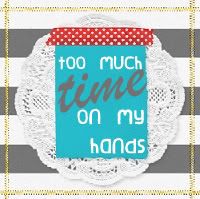Continuing with our insightful discussions with Claudia Kalur, a European interior decorator and founder of a Room for Frances, this week we are talking about eco-friendly Furniture. Great tips and suggestions! You can ask questions using the comments field here or on our Facebook page
Furniture - Part V
There are three main pieces of furniture that are fundamental in a little one's room: a crib, a changing table and a chair; and the choices are endless, in price and in style.
The most important of the three is the crib - and before we get to the eco-friendly options, you need to know that you should purchase a crib that meets the federal guidelines of the Consumer Product Safety Commission (CPSC). All new ones should meet and some even exceed the guidelines but when you "inherit" a crib, or purchase a second-hand one, you must pay special attention. These guidelines concern all safety related issues like the sturdiness of the frame and the width of the bars, so be sure to inspect it carefully before you use it.
So what is eco-friendly furniture? In short, it's furniture made from sustainable materials (from renewable resources, recycled materials, etc), free of harmful chemicals (such as certain wood preservatives and adhesives, lead paints, etc) and built in a resource-efficient way (for instance locally made furniture). The best choice is, of course, a piece made with a local hardwood, and by a local craftsman but often that is not possible or feasible. Luckily, today there are several options that are second best to that - just google "eco-friendly cribs"!
But there are a few things I would like to mention and that I think you should consider... The first one applies to EVERYTHING that claims to be green, sustainable, and eco-friendly and it turns out to be Made in China. Hardly green, considering the distance it had to travel and from a country that (in 2007) was responsible for almost 22% of the world's gas emissions, not to mention the destruction of their environment through water and land pollution. Yes, the USA was right behind it, with 19%, but quality control in the USA (as well as South-America and Europe) is much more reinforced and the distance traveled is a lot shorter (I am not even going to go into the humanitarian and political issues surrounding China!).
If your budget does not allow for a new sustainable crib, the alternative can be a second-hand crib, for instance. The advantage is, of course, that you are paying less than a brand-new piece, you are extending its life and, if it is not eco-friendly, it has already aired the VOCs for a while. Please be aware that you must (cannot emphasize this enough!) inspect the condition of the crib and make sure it is not more than a couple of years old.
As I have mentioned before, one of the best things you can do for the planet (and future generations) is to buy quality items, built to last, and extend their life as much as possible. This is particularly important when it comes to children because they grow so fast! If you choose carefully, all the furniture that you buy for the nursery can last for quite a while.
The crib - some adapt to toddler beds, and some even to double beds. Yes, I know, your child (or you) may not like the style anymore... but it can become a bed in a guest bedroom. The changing table - if it's a dresser, it will be useful for a lot longer. Better still, a vintage dresser can become a changing table and then a dresser again! The chair, even a rocker, especially if it's an armchair rocker, can remain in your teenager's room or be used somewhere else in the house.
If you can splurge on one thing, I would suggest the mattress - and I highly recommend choosing an organic one, like Naturepedic. However, if you cannot afford an organic mattress, please be sure to buy the mattress early on and let it air for as long as possible before the baby arrives and use an organic pad. A crib mattress can last you quite a few years if you move your baby from the crib to a toddler bed (they usually take the same size mattress), or if you have more than one child. If you always use a protecting pad, you will also be able to pass it on to someone else!
Click here to access last week's posting from Claudia, covering "Lighting" concepts.
Stay tuned for coming weeks when Claudia will be discussing more topics about eco-friendly children's rooms and nurseries.
Claudia Kalur is the founder of A Room for Frances, Nursery and Children's Room Design. She lives in rural Connecticut with her husband, Steven (an architect who specializes in green building systems), their 18-month-old daughter, Margot, and their doggy, Bayou.
Stay tuned for coming weeks when Claudia will be discussing more topics about eco-friendly children's rooms and nurseries.
Claudia Kalur is the founder of A Room for Frances, Nursery and Children's Room Design. She lives in rural Connecticut with her husband, Steven (an architect who specializes in green building systems), their 18-month-old daughter, Margot, and their doggy, Bayou.















No comments:
Post a Comment